Five Types of Retrievers and Their Characteristics
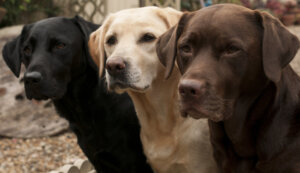
Retrievers are one of the most popular dogs among pet guardians. Their friendly and playful character makes this breed an ideal dog for families. These dogs are called retrievers, because they retrieve the killed animals and deliver them to the hunter without any damage. They originated in Great Britain and there are several types, although they all have very similar features. If you want to know more about the differences between the different types of retrievers, then keep reading!
1. Types of Retrievers: Labrador Retriever
This is a dog of strong constitution, about 56 centimeters tall (1.8 feet), weighing about 30 kilograms (66 pounds), with a high and deep chest and wide and strong limbs.
Its head is large, with a robust neck. The muzzle isn’t sharp and ends in a large, rounded nose. The Labrador’s jaw is proportionate and the teeth fit well; in fact it isn’t a breed prone to dental problems.
Its eyes are almond-shaped and express intelligence and good temperament. The ears are neither long nor thick and are set close to the head. The tail, a distinctive feature of the breed, is thick at the base and tapers towards the tip. It’s covered with short, thick, dense hair, giving it an “otter tail” appearance.
Labradors have a very affable character and are very sociable dogs, not at all aggressive or shy. They’re usually agile and easy to train, which is perfect for doing exercise with them. In addition, physical exercise and a balanced diet is very important in this breed, as they’re prone to put on weight.
They’re water-loving dogs, so you can go with them to beaches, lakes, and rivers – they won’t hesitate to take a dip. Underneath their thick, harsh coat is a layer of water-resistant hair. Although the most common ones are the yellow Labradors, there are also black and chocolate-colored dogs.
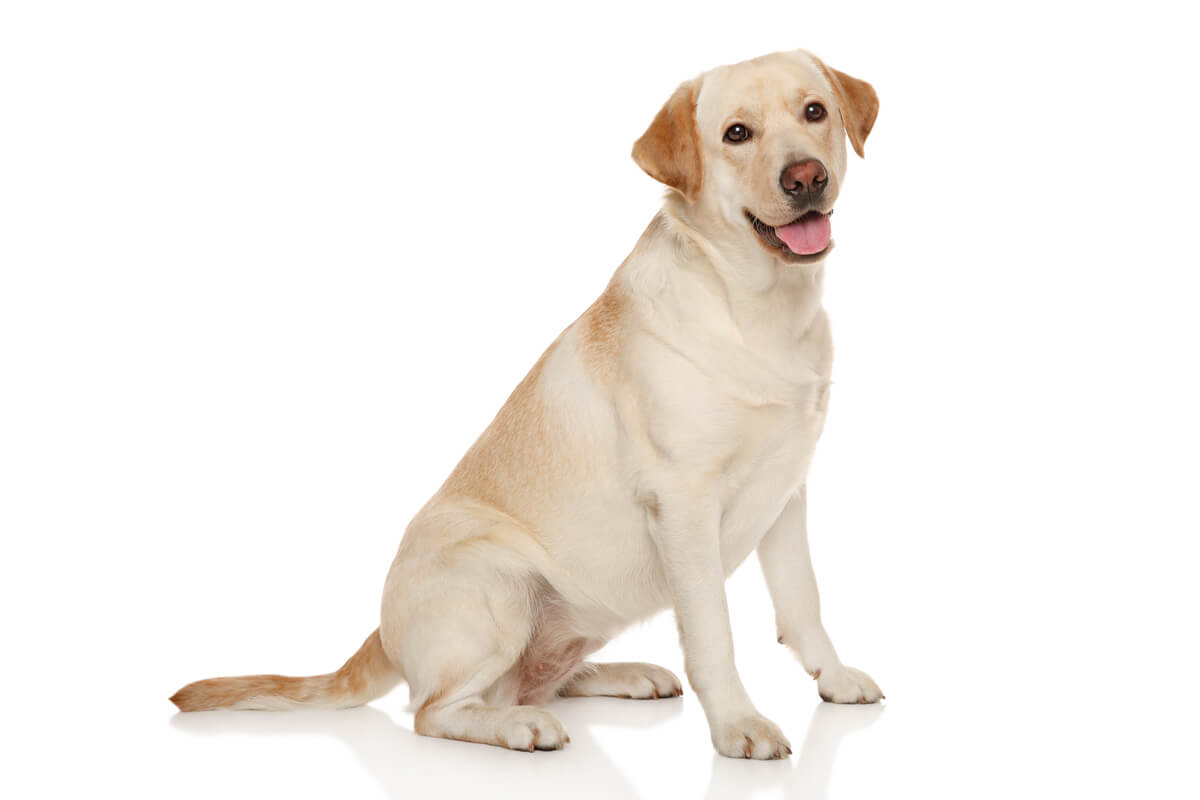
2. Golden Retriever
Golden Retrievers are very similar to Labradors, and they’re distinguished by their beautiful coat – golden or cream-colored, long and very soft and smooth. It’s a muscular and well-proportioned dog, with a weight and height similar to the Labrador. It’s docile, intelligent, friendly, confident and with an innate ability to work.
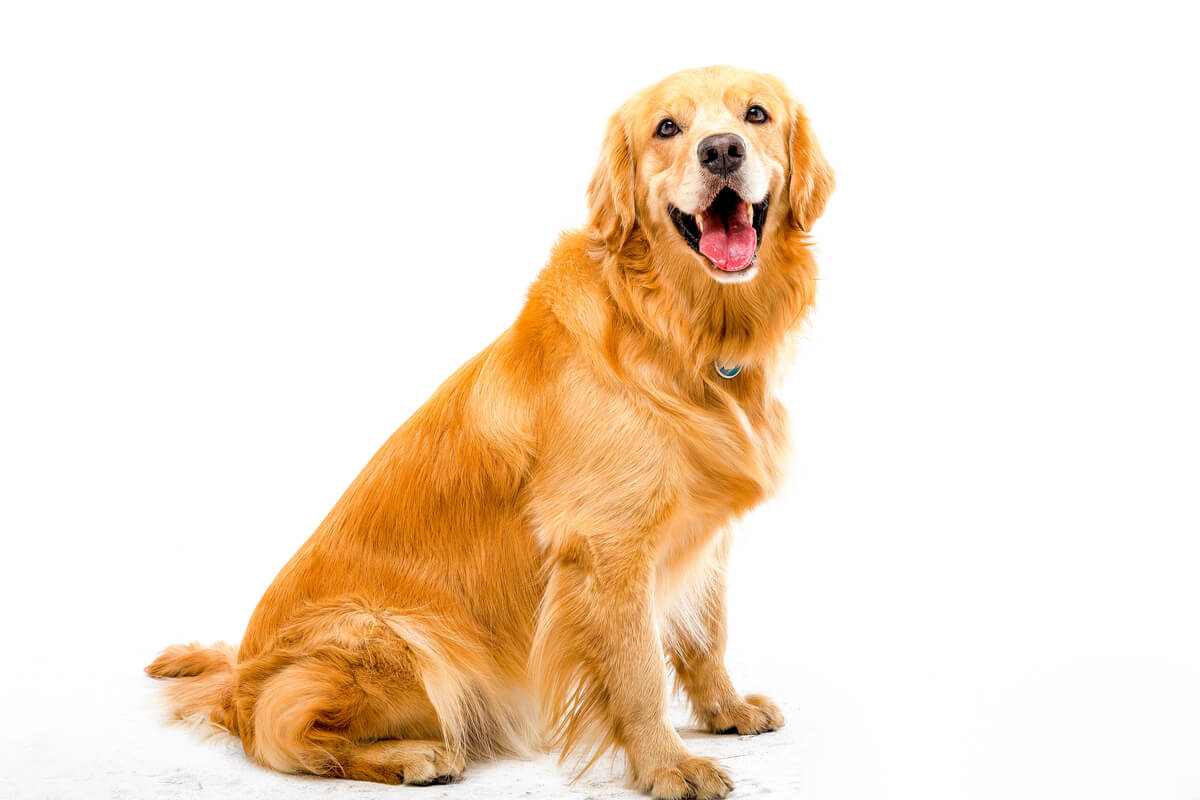
3. Flat-Coated Retriever
This type is thinner than the Golden Retriever, but still retains the strong constitution of other Labradors, without being heavy. The main difference is found in its coat, which is black or brown, with straight and fine hair and fringes on the legs and tail.
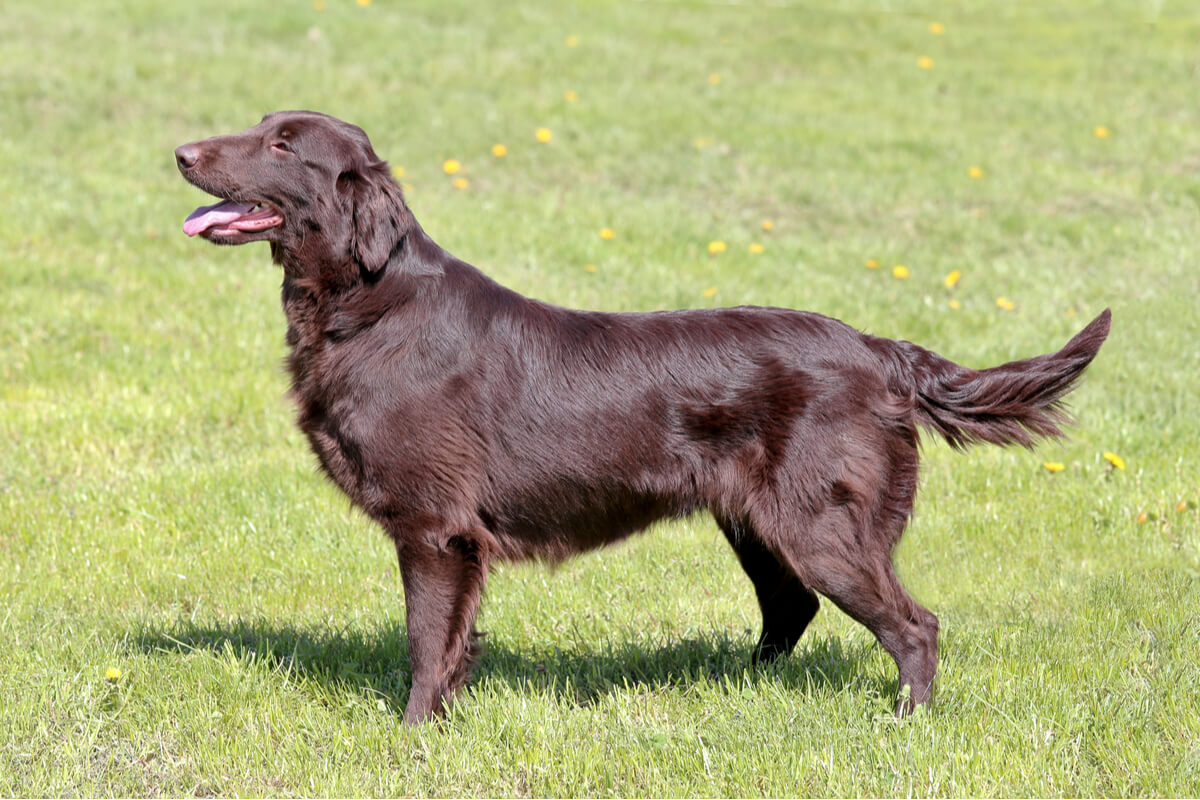
4. Curly-Coated Retriever
The most remarkable aspect of this retriever is its curly coat, which is black or brown. The curls are short and are attached to the skin and it has areas of smooth hair. They’re taller than Labrador Retrievers and Golden Retrievers.
The ears are smaller and their head and muzzles are the same length. Their features are a little different from other Retrievers and their character is a little more independent and reserved. However, it’s still a friendly, brave and energetic dog.
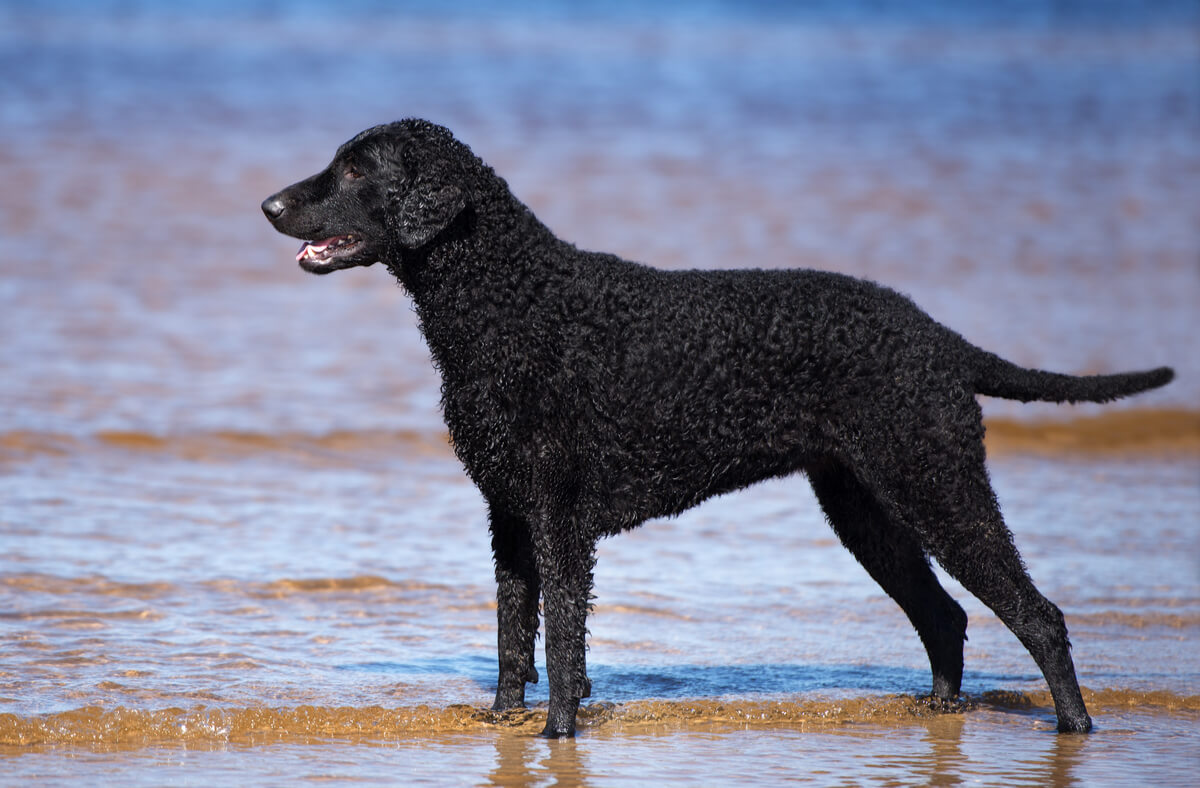
5. Nova Scotia Retriever
This type of Retriever was developed in Nova Scotia, as its name suggests, in the early nineteenth century to lure, attract and collect waterfowl. It’s a great swimmer and hunter.
It has a very playful character and their owners use games of positive reinforcement to help them to hunt birds. Its features are different from the rest of Retrievers. For example, its head isn’t wide and rounded, but has a sort of wedge shape, with a softer and sharper muzzle.
Since this breed was created for aquatic hunting, it has a double coat which is water-resistant, soft, and dense. The coat is smooth, except on the back of the body where it’s slightly wavy. In addition, fringes of hair hang down the throat, behind the ears, and down the legs.
Nova Scotia Retrievers are smaller than other Retrievers and their coat is reddish or orange, with white markings and lighter colored fringes.
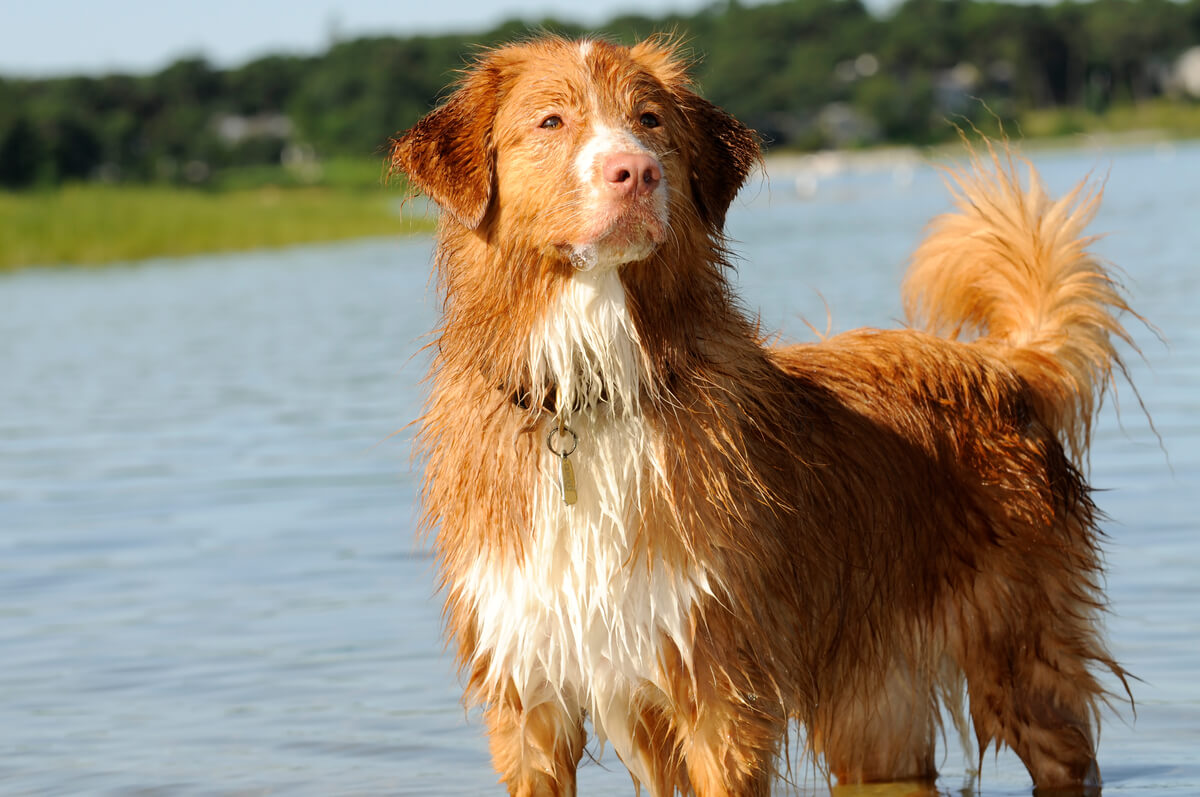
These are all types of Retrievers recognized by the FCI. The first are the best-known, but they all share a very similar appearance and character. Their beautiful physical features and gentle temperament make them an enviable canine companion.
Retrievers are one of the most popular dogs among pet guardians. Their friendly and playful character makes this breed an ideal dog for families. These dogs are called retrievers, because they retrieve the killed animals and deliver them to the hunter without any damage. They originated in Great Britain and there are several types, although they all have very similar features. If you want to know more about the differences between the different types of retrievers, then keep reading!
1. Types of Retrievers: Labrador Retriever
This is a dog of strong constitution, about 56 centimeters tall (1.8 feet), weighing about 30 kilograms (66 pounds), with a high and deep chest and wide and strong limbs.
Its head is large, with a robust neck. The muzzle isn’t sharp and ends in a large, rounded nose. The Labrador’s jaw is proportionate and the teeth fit well; in fact it isn’t a breed prone to dental problems.
Its eyes are almond-shaped and express intelligence and good temperament. The ears are neither long nor thick and are set close to the head. The tail, a distinctive feature of the breed, is thick at the base and tapers towards the tip. It’s covered with short, thick, dense hair, giving it an “otter tail” appearance.
Labradors have a very affable character and are very sociable dogs, not at all aggressive or shy. They’re usually agile and easy to train, which is perfect for doing exercise with them. In addition, physical exercise and a balanced diet is very important in this breed, as they’re prone to put on weight.
They’re water-loving dogs, so you can go with them to beaches, lakes, and rivers – they won’t hesitate to take a dip. Underneath their thick, harsh coat is a layer of water-resistant hair. Although the most common ones are the yellow Labradors, there are also black and chocolate-colored dogs.

2. Golden Retriever
Golden Retrievers are very similar to Labradors, and they’re distinguished by their beautiful coat – golden or cream-colored, long and very soft and smooth. It’s a muscular and well-proportioned dog, with a weight and height similar to the Labrador. It’s docile, intelligent, friendly, confident and with an innate ability to work.

3. Flat-Coated Retriever
This type is thinner than the Golden Retriever, but still retains the strong constitution of other Labradors, without being heavy. The main difference is found in its coat, which is black or brown, with straight and fine hair and fringes on the legs and tail.

4. Curly-Coated Retriever
The most remarkable aspect of this retriever is its curly coat, which is black or brown. The curls are short and are attached to the skin and it has areas of smooth hair. They’re taller than Labrador Retrievers and Golden Retrievers.
The ears are smaller and their head and muzzles are the same length. Their features are a little different from other Retrievers and their character is a little more independent and reserved. However, it’s still a friendly, brave and energetic dog.

5. Nova Scotia Retriever
This type of Retriever was developed in Nova Scotia, as its name suggests, in the early nineteenth century to lure, attract and collect waterfowl. It’s a great swimmer and hunter.
It has a very playful character and their owners use games of positive reinforcement to help them to hunt birds. Its features are different from the rest of Retrievers. For example, its head isn’t wide and rounded, but has a sort of wedge shape, with a softer and sharper muzzle.
Since this breed was created for aquatic hunting, it has a double coat which is water-resistant, soft, and dense. The coat is smooth, except on the back of the body where it’s slightly wavy. In addition, fringes of hair hang down the throat, behind the ears, and down the legs.
Nova Scotia Retrievers are smaller than other Retrievers and their coat is reddish or orange, with white markings and lighter colored fringes.

These are all types of Retrievers recognized by the FCI. The first are the best-known, but they all share a very similar appearance and character. Their beautiful physical features and gentle temperament make them an enviable canine companion.
All cited sources were thoroughly reviewed by our team to ensure their quality, reliability, currency, and validity. The bibliography of this article was considered reliable and of academic or scientific accuracy.
- Federación cinológica Internacional. Perros cobradores de caza.
- Miranda, A. P. (2010). Psicología y aprendizaje del adiestramiento del perro. Ediciones Díaz de Santos.
This text is provided for informational purposes only and does not replace consultation with a professional. If in doubt, consult your specialist.








